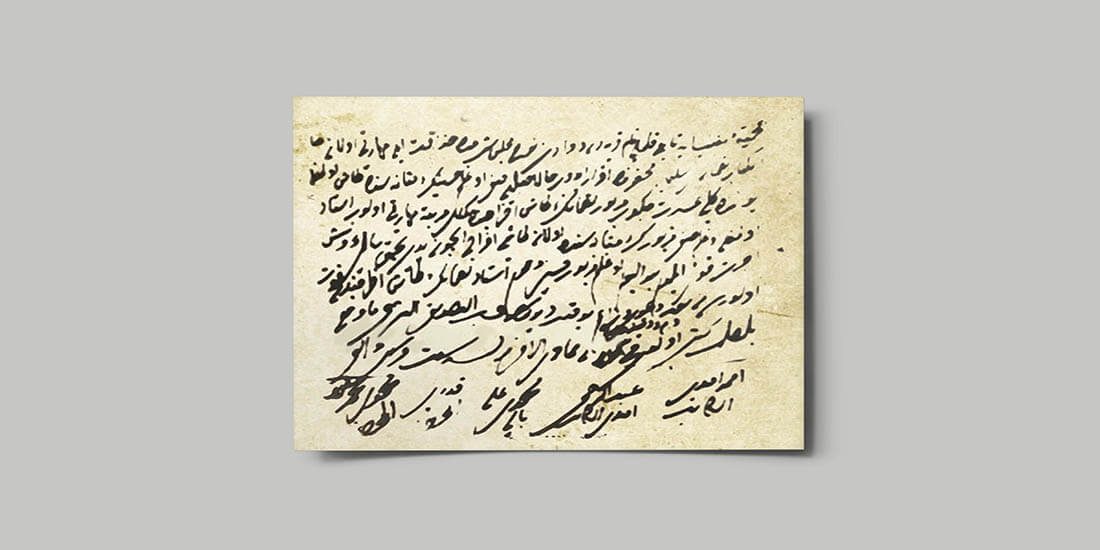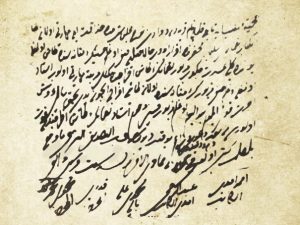In its new name Informed Consent Form, Consent Contract with the Old Name
- 22 October 2018
- Posted by: admin
- Category: Haberler

Taking form in 19th century in the west and starting with the words “informed consent”, informed consent and consent forms are recently routinely used in our country for pre-operative patient informing on the future operation and any future problems and for taking their consent. In this article, two urological “Consent Forms” between doctor and patient from the Ottoman Empire Period, resembling the patient consent forms of today, are presented.
Material and Method
Urological operations made under “consent form” agreement in Ottoman Empire Period were researched in internet environment, libraries, medical museums and Ottoman archieves and consent form contents were examined. Book and articles on the subject were examined.
Findings
“Informed consent” forms started to be used in the West in 19th century are separately organized today for every medical branch, intervention and treatment as “informed patient consent” forms. Based on Turkish medical history, “consent form” was signed between the doctor and patient also in Ottoman Empire.
Although craftsman of medical doctors was regarded in tradesman class in Ottoman Period, they didn’t have social security, professional insurance or privilege like other tradesmen. Patients could complain to the judge about doctor’s treatment and interventions. Thus patients were asked to sign “consent form” before the treatment to prevent any legal actions and appear before the Muslim judge. Treatment began after patient signed this form stating to assent to any future complaints after treatment/intervention and admit any future problems for applications. Thus the doctor would be exempt from many problems.
One of the mentioned consent forms was registered in the judgment book of Bursa judge in 1575. Hasan bin Hüseyin from Bursa came to the court and let surgeon Hüseyin bin Mehmed make a surgical intervention on his young son suffering from inguinal stone/hardness and confirmed before the witnesses not to proceed against the doctor if his son died during intervention. Although the disease wasn’t exactly mentioned, inguinal hardness resembled urological pathologies such as inguinal cord cyst or undescended testicle torsion other than inguinal lymphadenomegaly or inguinal hernia.
The other consent form was signed in 1656 and is exhibited in Celal Bayar University (CBU) Medical History Museum. Signed in 17th century, this was on bladder stone passing and treatment and possibly provided the doctor to intervene the patient more comfortably. (Figure 1b)
Results
With “informed consent forms”, doctors secure themselves against future damages to be caused by their actions and apply their treatments more comfortably. A similar of this method was applied in Ottoman Medical practice. Before the Muslim judge and witnesses, consent was taken with the “Consent form” signed by patient’s inheritors stating that the patient accepted the intervention and inheritors won’t sue the surgeon. Registries of the legal cases opened despite consent forms are present in the judicial registries of the time and the condition was quite similar to today.

Figure 1a: Inguinal stone/hardness (undescended testicle torsion?) operation consent form, Ottoman Archieve, Bursa

Figure 1b: Bladder stone treatment consent form, CBU Medical History Museum, Manisa
Ekrem Güner
Health Sciences University, Bakirkoy Sadi Konuk Training and Research Hospital, Department of Urology, Istanbul

